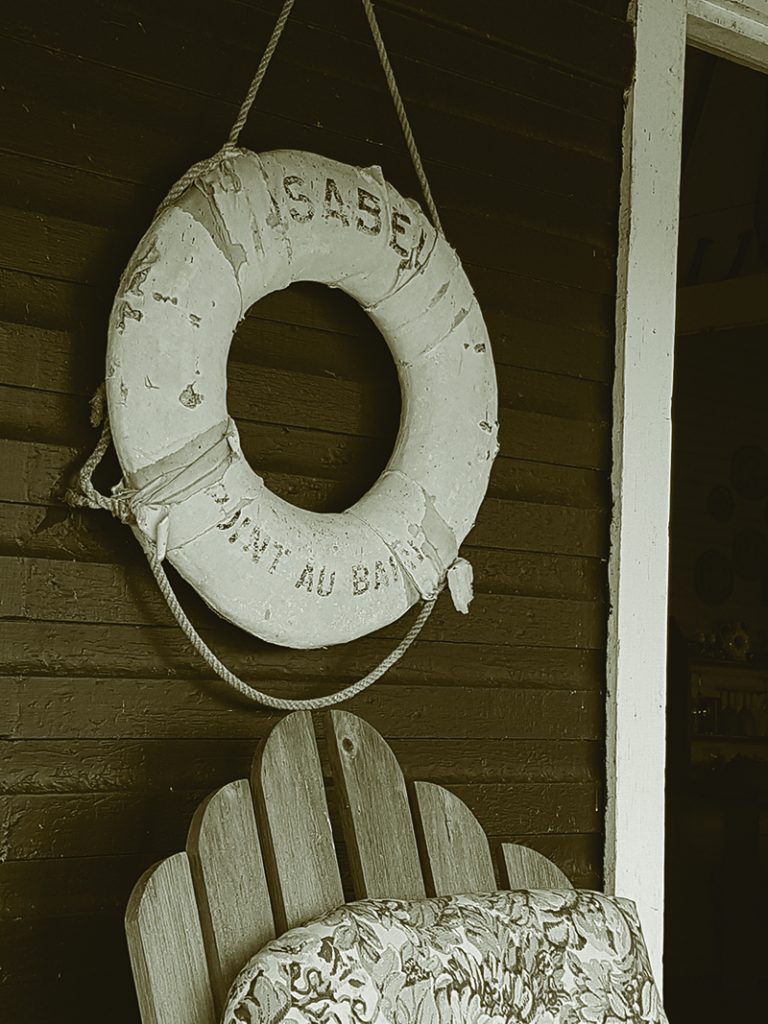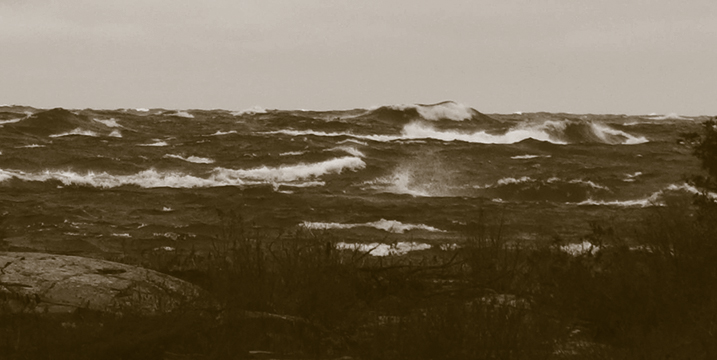
Jessie Read Greenaway first came to Bayfield Inlet as a child, in the 1920s. Her family’s cottage was named Wakatuka, now cottage A834 owned by Allan Scudamore. The Greenaway family was friends with Hartwell and A.J. Priest, whose descendants still use cottages on islands A901 and A1010 nearby.
In 1980, Jessie Greenaway recorded a series of Recollections of Bayfield from her childhood in the 1920s and ’30s. They include tales of taking the CPR “sleeping car” from Union Station in Toronto to Pointe au Baril station, getting off there, then motoring in an open boat north towards Bayfield Inlet, with all the risks that entailed.
Here’s an outstanding story from Jessie’s “recollections,” about a dark and stormy night punctuated by an unfamiliar knock on the door of Wakatuka, and the appearance of two small, stranded children.

August 4, 1934 was a day when placid sunlight changed without much warning into an evening of clouds and high winds, followed by a raging sea. After our supper, my mother and a friend and I were enjoying the warm cheerfulness of the logs burning in the fireplace. Suddenly, we heard a noise down at the dock.
I went down through the gathering dark to the shore. There beheld a good-sized covered fishing-craft, driven by an Indian guide. A man had already stepped onto the dock and was assisting another. I confusedly heard him rapidly introducing the party: “This is … Hutchins … Congressman … Henry Bannon … we … ”
Then two little shivering girls emerged from the boat, his grandchildren, named Marian and Frances Ferguson. We gave them their first Bayfield welcome.
The whole party had been on a fishing-trip to Bayfield from the Ojibway Hotel in Pointe au Baril, but when they reached the edge of the open water upon their return, the storm made it entirely impossible to go any further.
We made our way up to the house. Almost immediately my mother was in the kitchen, baking buns. We soon managed a sustaining meal in the warmth of the fire. The boat-driver would not come up, but gladly accepted food and blankets.
We happened to have two little rooms for Marian and Frances to sleep in, and the gentlemen had two cot-beds in the living-room, and they stoked the fire for us all through the night. It reminded me of this poem:
“While the wind blew a hurricane
And by and by she blew some more.”
There was great worry, of course, about the anxiety that the mother of the children would be suffering back at the Ojibway, wondering where in the dark night her husband and two girls had ended up. Maybe holed up somewhere, or maybe lost in the Bay somewhere off Hangdog Point?
By morning the storm had abated somewhat, and the pilot, wary and skilled, declared that a passage down to Pointe au Baril could be accomplished. So, we fortified all the visitors with bacon and eggs, and off they went (followed by our prayerful wishes).
The following day, Henry Bannon came to our island to tell us of their safe arrival back at the Ojibway. And he had passed a cottage up for sale on the way back to our inlet that morning. It was the one built by Fred Elliott, who was unable to come any more.
Henry Bannon’s words (in a warm, yet oratorical voice) were: “I just thought, if there are neighbours up here as good as these, I want to be here the rest of my life.”